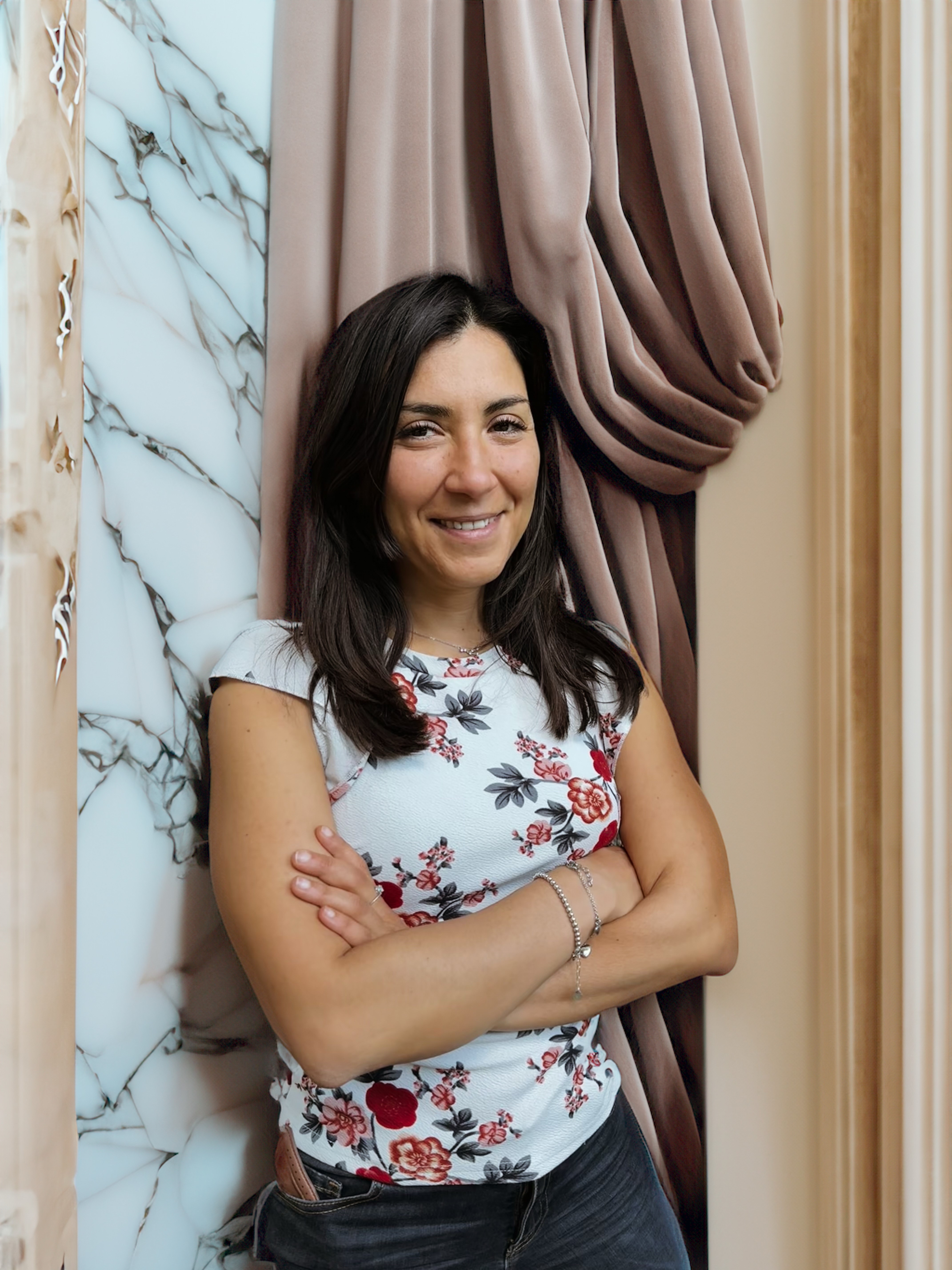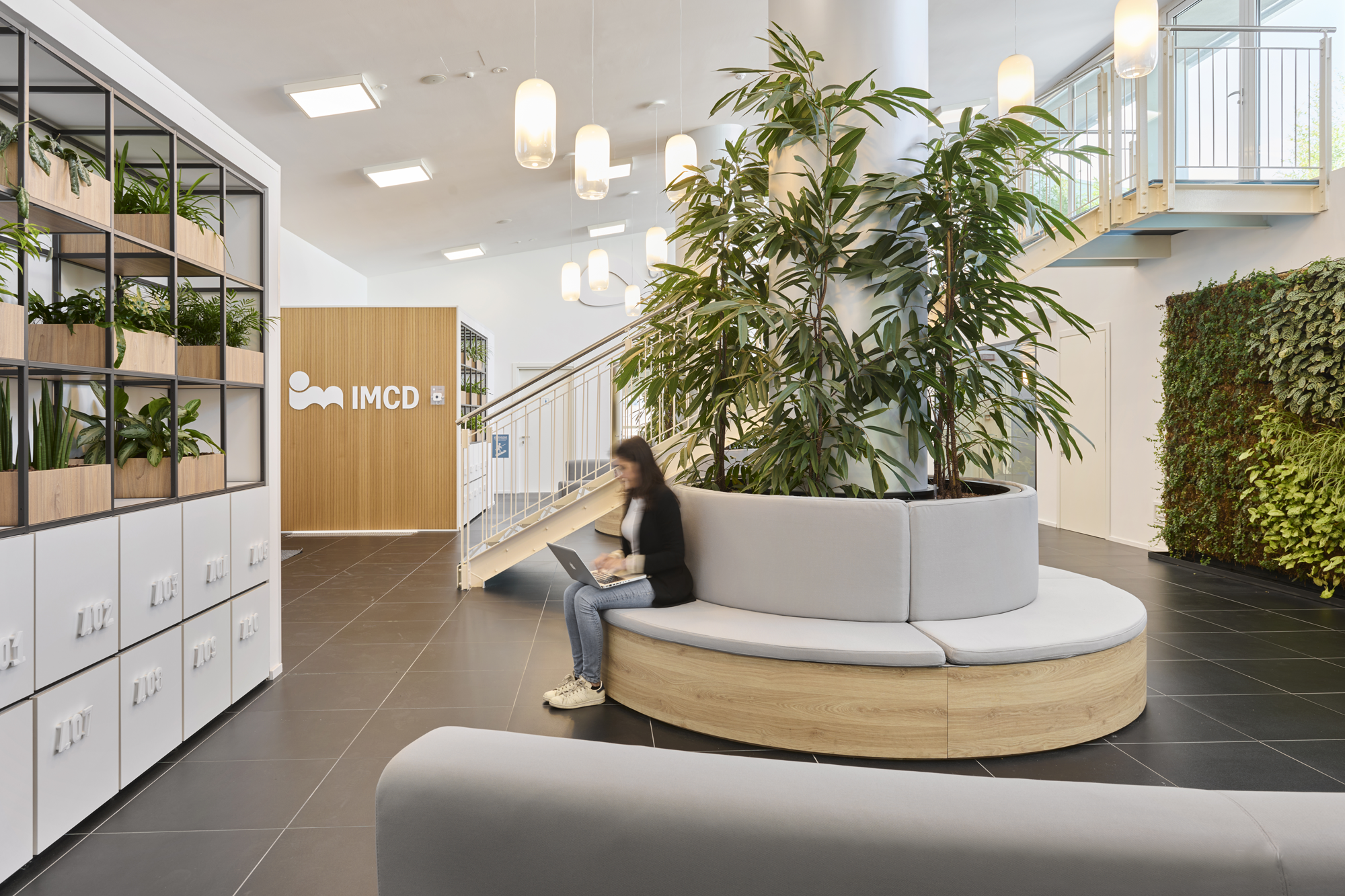-

 Technology and Design: Finding the Perfect BalanceInterviews with Leading Italian System Integrators by Chiara Benedettini and Pietro Conte
Technology and Design: Finding the Perfect BalanceInterviews with Leading Italian System Integrators by Chiara Benedettini and Pietro Conte
Technology and Design Need to Communicate
from the Very Beginning
Erica Giordano
Ricoh Italia

“Ricoh is a Workplace Integrator specializing in the design and outfitting of workspaces, integrating technological solutions designed to enhance people’s well-being and experience. To do this, we work in synergy with architects and designers, integrating technology in a coherent, functional, and sustainable way.”
Erica Giordano is AV Solutions Architect at Ricoh Italia and describes the company’s expertise in spatial design and her personal experience, spanning architecture, listening to end users, and design vision.
Chiara Benedettini - Which of your recent projects best represents your design approach and philosophy?
EG – I’ll highlight two examples. The first involves IMCD, a company specializing in chemical materials. For their new headquarters, we designed an immersive environment: a 12-meter-long corridor featuring customized visuals, audio, and sensory elements. A secondary space thus became a powerful communication tool capable of engaging clients.
The second project was a boardroom for a company in Rome. We designed advanced LED wall visualization systems, control, and broadcast setups — and, above all, seamlessly integrated technology into highly distinctive furnishings, including a large marble table concealing collaboration systems within. In that case as well, collaboration with architects and interior designers was essential.
Pietro Conte - What does the dialogue between technology and design mean to you — and to Ricoh?
EG - For me, it’s a continuous and reciprocal process. Design gives form to technology, making it understandable, accessible, and closer to people. Without design, technology risks remaining cold and abstract. But the reverse is also true: technology offers new tools to design, expanding the boundaries of what is possible. Technology isn’t the enemy of design — if approached early and collaboratively, it can truly enhance spaces. What’s needed is dialogue, teamwork, and a bit of humility from everyone involved. When technology is introduced too late, you end up forcing solutions that are neither aesthetically pleasing nor functional — and often more expensive. Another challenge is the certification of materials, especially when working with public institutions.
PC - Technology and furniture often follow parallel paths. How can system integrators help bring them together?
EG – Not only it is desirable — it’s necessary. We live and work in increasingly intelligent environments: homes, offices, hotels. Integration must be organic and coherent from the design phase onward. We try to facilitate this dialogue between designers and suppliers, proposing solutions that balance technological, aesthetic, and functional needs. Our role is also cultural: we bring technical awareness and help align different worlds toward a shared vision.



1. Immersive corridor of the IMCD company. (Photo Credits: Design & Build Project, Progetto CMR Group) 2. IMCD entrance. (Photo Credits: Design & Build Project, Progetto CMR Group)
3. Digital Signage system for a meeting room.
PC - User experience is central, but technology can be complex. How do you approach this with clients?
EG - We focus on the user first. We make it a point to speak directly with the people who will actually use the space—not just those controlling the budget. Understanding their expectations, habits, and how they intend to interact with the room is crucial, far beyond just knowing which devices they want. Our proposals go beyond technical checklists: we design tailored usage scenarios, seamlessly integrating technology with building automation and furnishings.
CB - Another emerging topic is the multifunctionality of spaces. How does technology help make them more flexible?
EG - Today, people work in dynamic ways and not necessarily from the office. We are increasingly asked to design spaces that are flexible and reconfigurable. For example, a large meeting room that can be divided into three smaller spaces — each still connected to the others and maintaining the same multimedia, lighting, HVAC, and automation features as the plenary setup. This, of course, has an impact on systems, networks, and even furniture.
CB - Looking ahead, which technologies will take the lead in the coming years?
EG - I believe we’ll see strong growth in ambient intelligence. Today’s systems are reactive — they execute commands. Tomorrow, they’ll be predictive and adaptive: lighting will adjust to activities, rooms will recognize who enters and adapt accordingly. Artificial intelligence will play an important role, though I believe it should remain a tool. And we’ll increasingly see invisible technology: functional, integrated, yet hidden from view. The design of the future will focus on experience, not on the object itself.
CB - Invisible, yet present - much like good design
EG - Exactly. Technology must fade into the background to be truly effective. Only then we know we’ve done our job well.
